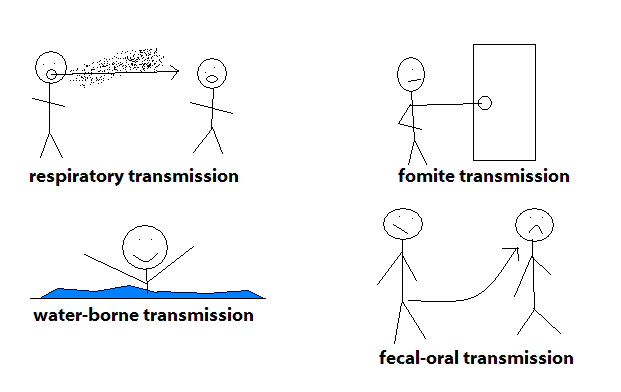

Picture by Jeremy Schneider - based off of Dr. Siegel's T-Shirt.
Transmission
• Adenoviruses are very contagious and
local outbreaks are common (for example, at summer camps, playgrounds, schools,
or public swimming pools)
• Respiratory Transmission: usually through a cough or a sneeze, adenoviruses
can infect the mucosa of the eyes or respiratory tract through aerosolized viral
particles or through mucous droplets.
• Direct Contact: adenoviruses are very stable in the environment and
can survive chemical and pH disturbances. Therefore the virus can be transmitted
by touching a contaminated surface and then touching the mucosa or the eyes
or mouth (note: this is also semi-respiratory transmission since it infects
the respiratory mucosa).
• Fecal-Oral: usually through contaminated food or water, or through poor
personal hygiene (i.e. do not wash hands).
• Water-borne: adenoviruses are often transmitted in swimming pools, especially
when insufficient chlorine has been used.